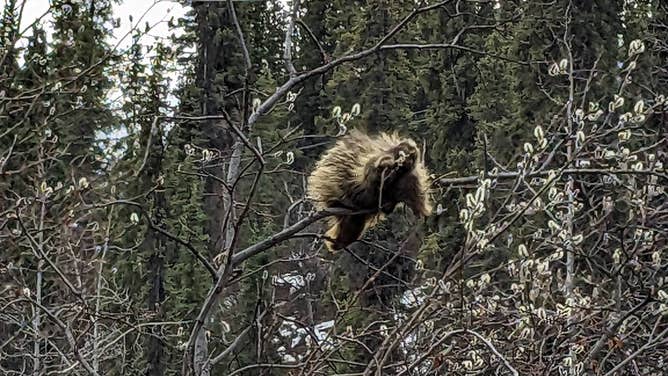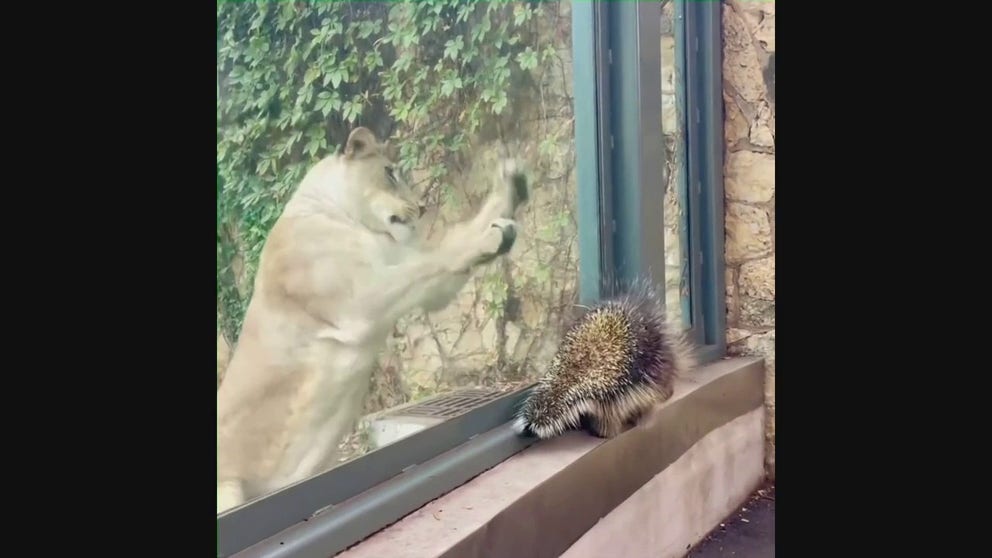Porcupines accidentally quill themselves so often that nature provided an adaptation
Now that spring has sprung, porcupines have abandoned their dry, woody meals of winter in favor of juicy spring blooms, which, unfortunately for them, live very high off the ground on spindly twigs that can’t hold the weight of the second-largest rodent in North America. It happens so often that their quills adapted over time to keep them safer.
Watch lion try to play with porcupine
File: Glass at the San Antonio Zoo is the only thing saving this playful lion from paws full of quills. This was the lion's first meeting with Elmer the porcupine.
Spring is no picnic for hungry porcupines. The prickly rodents get a bad rap for being a fierce opponent, but it turns out that the porcupine is often a victim of its own defensive weapon: self-quilling.
"If you spent a long winter eating nothing but dry tree bark, what is the first thing YOU would opt to eat when spring finally arrived?" asked a ranger on the Denali National Park and Preserve’s Facebook page.
After a snowy winter, the animal loses about 17% of its body fat. The famished creatures love willow buds. As you can see from the photo below, they sit on the very end of thin twigs. Unfortunately, the slow animals are not that nimble or graceful and often fall and stab themselves.
RARE AUSTRALIAN MARSUPIAL BOUNCING BACK AFTER MORE THAN CENTURY-LONG ABSENCE

A precariously perched porcupine reaching for a fresh snack at the Denali National Park and Preserve.
(M Tomeo / NPS / FOX Weather)
The up to 30,000 sharp quills that cover the upper parts of its body and tail are only loosely attached to the skin, according to the State University of New York (SUNY) College of Environmental Science and Forestry. Quills are hollow and actually made up of modified hairs and have barbed ends.
The barbs act like a serrated knife, easily cutting into an attacker or curious pet. After a fall, the porcupine can dislodge a quill and impale itself.
But nature provided. A porcupine researcher found that the quills are covered in an antibiotic fatty acid to prevent infection.

File: Porcupine at Great Sand Dunes National Park and Preserve.
(NPS/Patrick Myers / FOX Weather)
If you are wondering how often porcupines fall, over a third of the skeletons that the researcher studied had suffered major injuries, which, he wrote, "suggests that porcupines fall relatively frequently from trees."
Predators beware: The antibiotic quills may not be enough protection. Porcupines can drive quills into an attacker with their tails. And the barbs help the quill to dig deeper as the victim’s muscles move. One can hit major blood vessels or vital organs, according to SUNY.
Researchers out of Boston feel the quills are so efficient that they are looking into developing better needles and adhesives that sue the sharp barbs.
